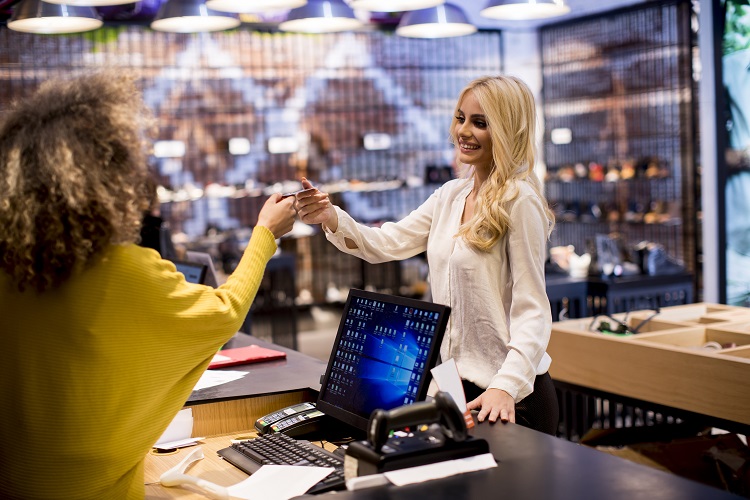8 Merchandising Tips That Can Reduce Shrink Without Impacting the Customer Experience

In retail, offering a great experience has become the expectation businesses must live up to, but what happens if your business is facing an issue with theft or shoplifting? Often, the best way to sell an item is not the best way to protect it. Locking everything up in a glass case or locked cabinet affects your customers' ability to touch, feel, or hold items, which can negatively impact their overall experience. On the positive side, there are ways you can set up your store layout and merchandise your products to deter theft without impacting the customer experience.
Listed below are 8 tips that can reduce shrink from theft without coming between your customers and the merchandise they came to your store to experience:
- Place your most expensive items near areas where employees are expected to be positioned. The cash register area, employee workstations, and areas that require continual staffing (e.g., service desk) are great places to display these items. Having employees nearby is a great customer service tool to deter customers from taking those items.
- Have your display fixtures run in straight lines, so employees can easily see from the front of the store to the back. Shoplifters don't want to be noticed while committing their crime, so reducing the ability for them to hide may discourage them.
- Use security cables to secure high-value display items. Shoplifters often look for items that are out of their packages to steal because it is easier to argue that an item belongs to them. By securing display items, you deter the theft of those items without interfering with customers' ability to purchase the product.
- Use anti-sweep hooks or shelf fixtures that allow only one item to be selected off the hook or shelf at a time. A common technique for shoplifters is to find a sought-after item and use their arm to sweep the entire hook or shelf of product into a bag. It's quick, easy, and often goes unnoticed. By using anti-sweep fixtures, you eliminate this possibility and force them to take significantly more time and select one item at a time. This increases the risk of being discovered and often reduces the amount of merchandise they can take.
- Limit the number of high-priced products you place on the shelf at any one time. This will allow your customers to be able to select and purchase items without waiting for assistance, yet limit potential losses if a shoplifter were to take items without purchasing them.
- Ensure items on the shelf are front facing and flush with the front of the shelf. This will allow you to easily discover missing items and make sure they were purchased properly. If not, you can make necessary adjustments to protect additional items from being taken.
- Consider using a pull tag system for larger, more expensive items. Instead of displaying merchandise, have a sign holder with a tag for each item. The customer then takes the tag (not the actual merchandise) to the register to make the purchase. Once the purchase is complete, an employee will retrieve the actual item from the back room and present it to the customer. This option requires more time and employee support, but it nearly eliminates the potential for loss.
- Place the cash register area between the merchandise and the entrance/exit door. Having the register in this location allows your employees to greet every customer who enters your business. Shoplifters want to commit their crime without being noticed. By greeting them as soon as they enter your business, you stop that from happening. By positioning your register at the front of the store, you also ensure that every customer walk past an employee before leaving. This allows your employees the ability to monitor customers and offer support to those who need it.
An insurance company that cares about you and insuring the things you wish to be insured.
Get a Quote> Find an Agent>

